During 2014, I began exploring digital diplomacy through social networks. I found that social networks are an effective way of analyzing digital diplomacy given that diplomats, embassies and MFAs now routinely follow one another on social media. For diplomats and diplomatic institutions, social media has become an important working tool as it enables them to gather and disseminate information throughout the diplomatic milieu in real time.
This is perhaps the reason why, at times, countries that do not have diplomatic relations in the physical world have established such ties in the virtual one. I refer to geo-political enemies that follow one another on twitter as “follow-mies”. For instance, Israel’s official spokesperson for Arab media follows both Iran’s President (@HassanRouhani) and the Iranian MFA (@MeetIran) on twitter given a desire to gather relevant information on Iranian foreign policy.
After exploring the social network of world MFAs, the social network of world leaders and the social network of the United Nations in New York and Geneva, I decided to start 2015 with analyzing the social network of Foreign Ministers on twitter.
An important question is do world leaders (e.g., Prime Ministers, Presidents and Foreign Ministers) use twitter to simply follow one another and gather information or has it transformed into a tool enabling leaders to communicate privately with one another. The first step towards answering this question is evaluating the degree to which Foreign Ministers actually follow one another on twitter.
In order to analyze the social network of Foreign Ministers I compiled a sample of 50 Foreign Ministers from various nations and regions thanks to a list prepared by the wonderful @Twiplomacy website. I must say that I was surprised at the small number of Foreign Ministers that are active on twitter. While I was able to compile a sample of adequate size, I found that there are more MFAs, Heads of State and UN embassies active on twitter than there are Foreign Ministers. The sample used for my analysis is presented in the table below.
Sample of 50 Foreign Ministers
Using the Visone program I was able to map the Social Network of Foreign Ministers as can be seen below. Note that the most densely populated gray area represents the center of this network and the Foreign Ministers that are at the heart of this social network.
The Social Network of Foreign Ministers
In order to analyze the social network I calculated three parameters. The first is the in-degree parameter which measures the popularity of the Foreign Ministers comprising the network. The more popular a Foreign Minister- the greater his ability to disseminate information to his peers. The table below presents the 10 most popular Foreign Ministers. These are also identified in the Social Network in the image below.
In-Degree Parameter
In-Degree Parameter: Social Network of Foreign Ministers
The second parameter I calculated was the out-degree parameter. This indicates which Foreign Ministers are the most avid followers of their peers. This parameter is also of great importance as the more Foreign Ministers one follows the grater his ability to gather information from his peers. The table below presents the 10 Foreign Ministers that received the highest out-degree scores. These are also identified in the social network in the image that follows.
Out-Degree Parameter
Out-Degree Parameter: Social Network of Foreign Ministers
Finally, I calculated the betweenness parameter. This parameter identifies which Foreign Ministers serve as important hubs of information as they connect Ministers that do not follow one another directly. The table below presents the 10 Foreign Ministers that received the highest betweenness scores. These are also identified in the social network in the image that follows.
Betweness Parameter
Betweness Parameter: Social Network of Foreign Ministers
It should be noted, that only four Ministers received high scores on all three parameters and they are: Philip Hammond (UK), Laurent Fabius (France), John Baird (Canada) and Miroslav Lajčák (Slovakia). Likewise, it appears that Foreign Ministers are more avid followers of their peers than Heads of State. The average Head of State is followed by 4 of his peers while the average Foreign Minister is followed by 8 of his peers.
There are three results that warrant further elaboration:
- Follow-mies: The analysis of this social network did not present any enemy states whose Foreign Ministers follow one another on twitter. John Kerry does not follow Iran’s Foreign Minister and vice versa. Likewise, Israel’s Foreign Minister does not follow any of his Arab peers nor do they follow him. Thus, it is possible that “following” a Foreign Minister on twitter is viewed as a political statement.
- Clusters: As is the case with most social networks of Twiploamcy, the Social Network of Foreign Minister reveals that Minister are most avid followers of their regional peers. For instance, South and Latin American Foreign Ministers make sure to follow their regional peers thus producing a cluster as can be seen in the image below. Similarly, African Foreign Ministers form another cluster. These clusters might suggest that Twiplomacy is first and foremost a tool for regional cooperation or that Ministers are especially interested in communicating with and gathering information from their neighbors.
African and S. American Clusters
- Small States and Digital Diplomacy: While Western Foreign Ministers (e.g., France, UK, US, Canada, Austria) received high scores on most parameters, so did foreign ministers from smaller states (e.g., Slovakia, Kenya, Latvia, Lithuania, Kosovo). In fact, Ministers from smaller states attract more peers than Ministers from nations that are at the heart of diplomatic activity (e.g., Israel, Iran). This finding demonstrates that through digital diplomacy smaller states can position themselves at the very heart of international diplomacy thereby increasing their geo-political importance.
Next week I shall be exploring if the digital divide is narrowing thanks to digital diplomacy. Until then, keep the conversation going and twee me @Ilan_Manor

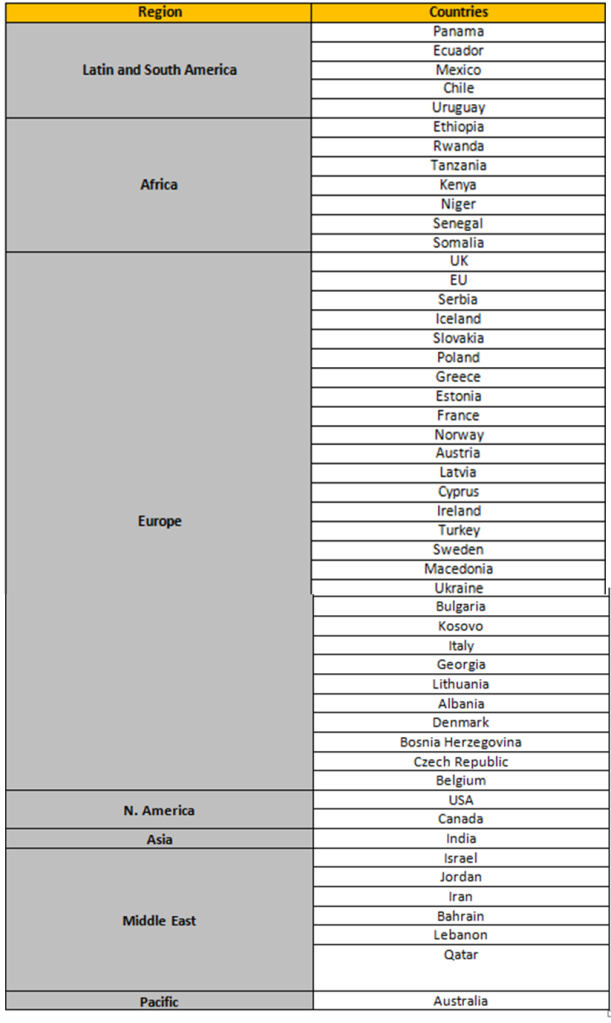
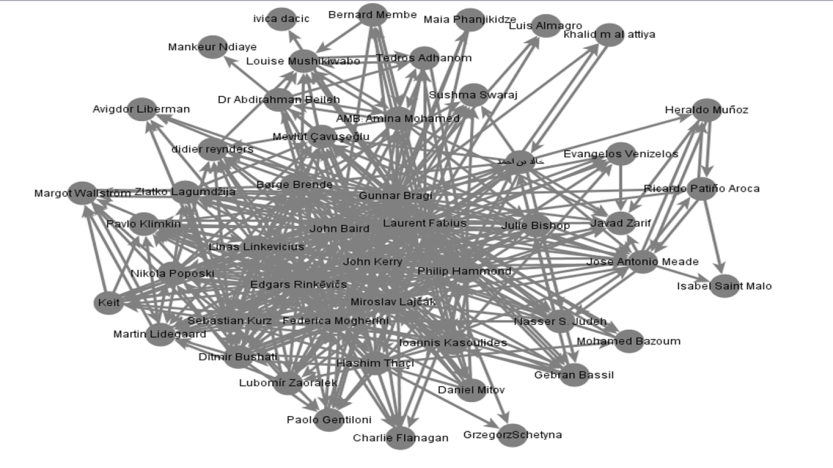
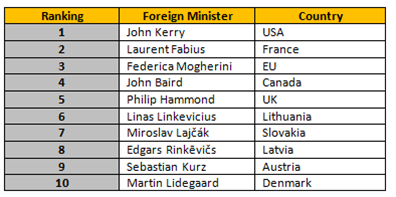


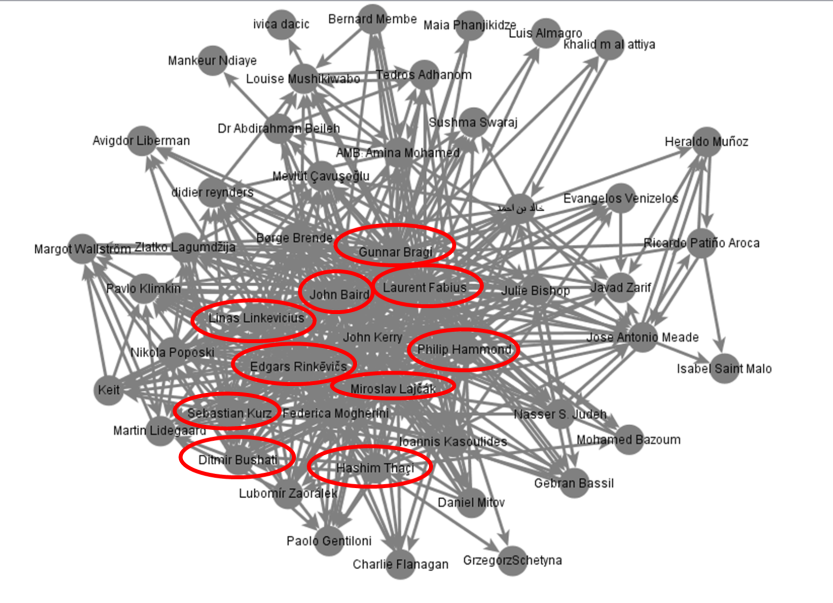
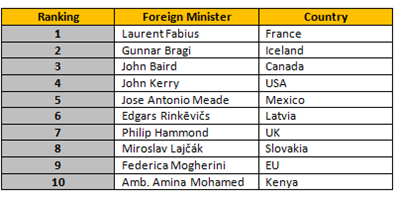


2 thoughts on “The Social Network of Foreign Ministers on Twitter”